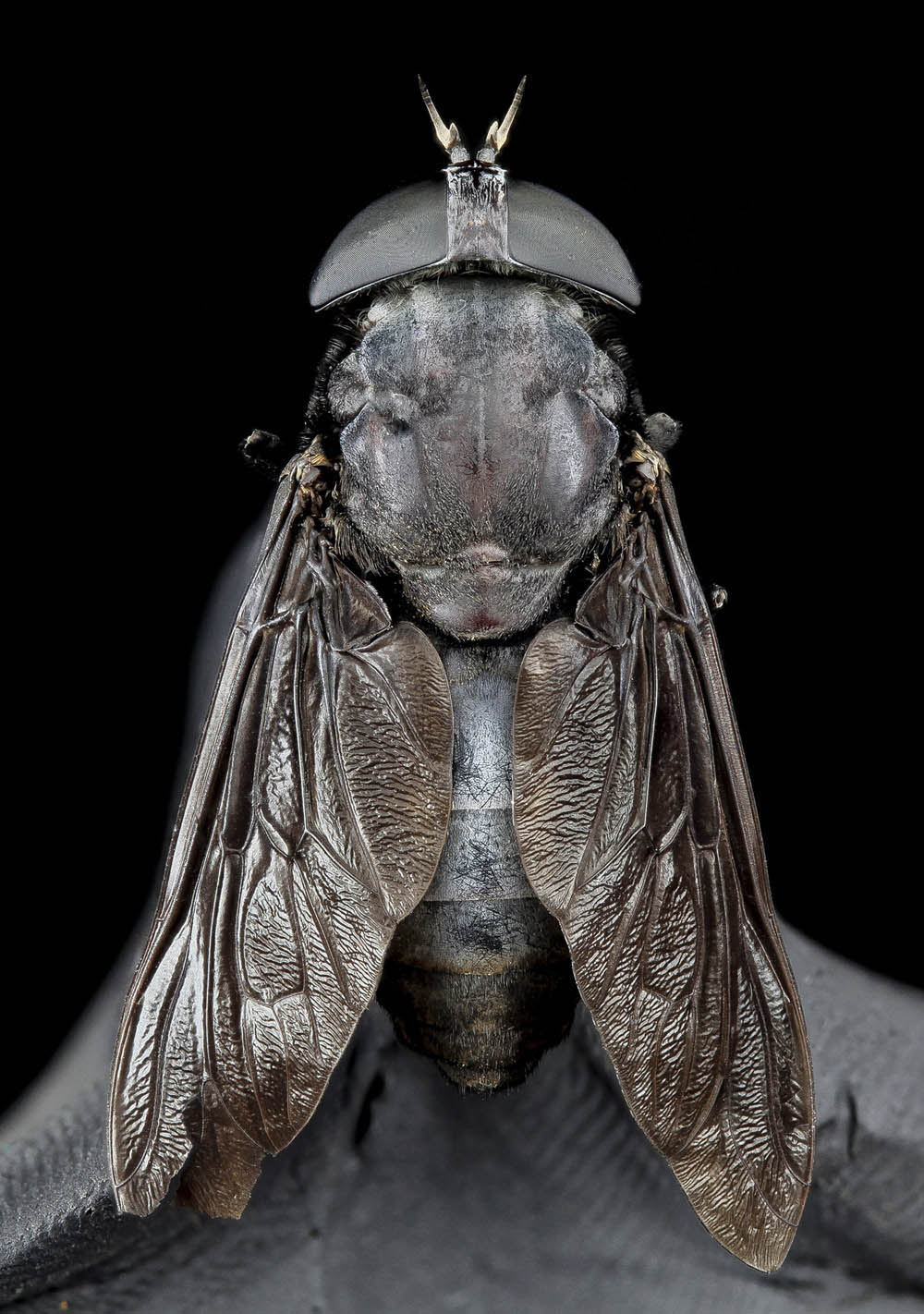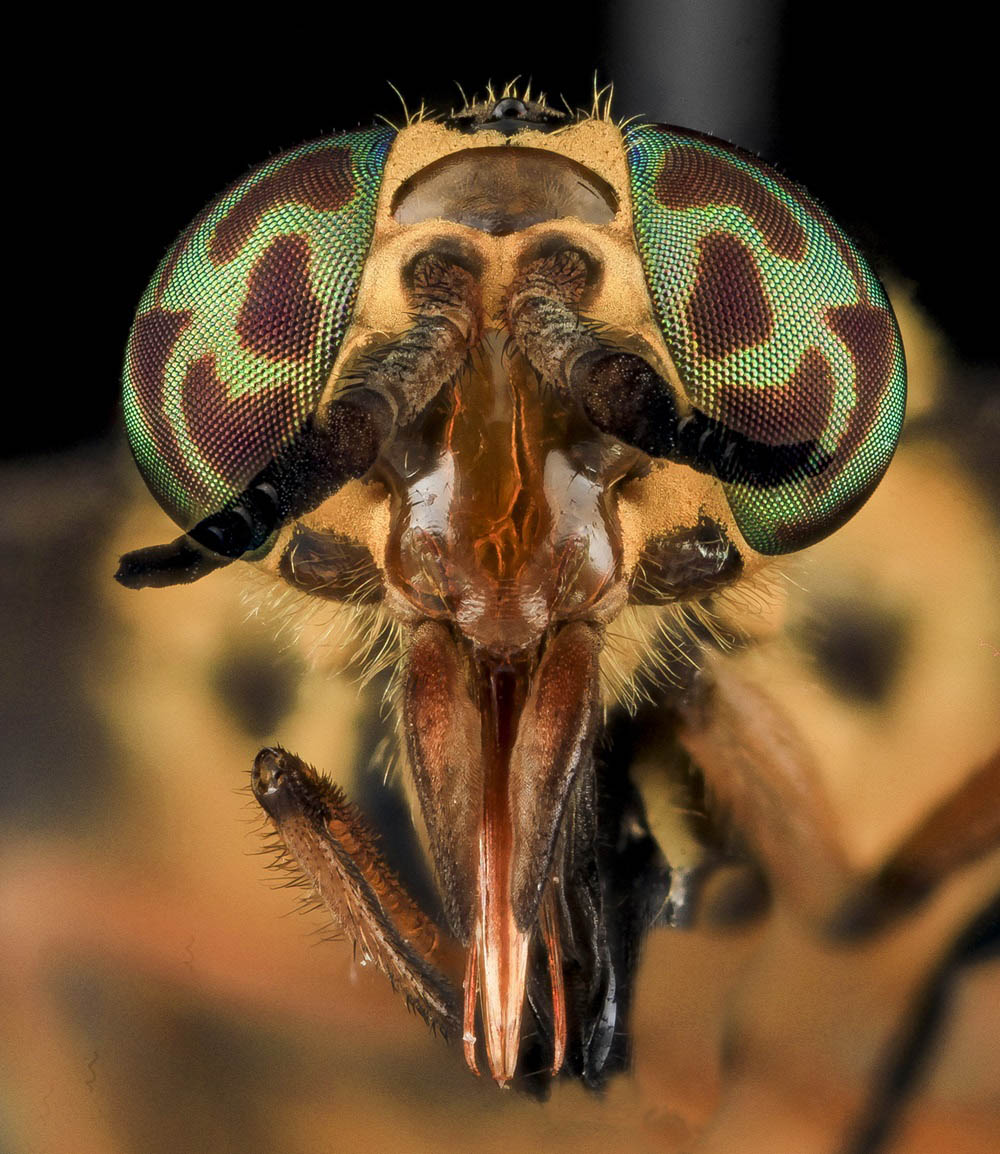Tabanids, also known as horse flies and deer flies, are insects in the family Tabanidae and are well-known for their painful bites and persistent feeding behaviours. About 4,300 species are described worldwide, including 144 in Canada. Some of the most commonly encountered species in Canada are the black horse fly (Tabanus atratus) and the bothersome deer fly (Chrysops excitans). Despite their reputation as a nuisance, tabanids play crucial ecosystem roles as pollinators and as an important food source for other animals.

Description
Tabanids are stout-bodied flies that range from 5 to 27 mm in length, with deer flies being generally smaller than horse flies. They have very resilient bodies and can often survive several swatting attempts. They have very large eyes that often display distinctive patterns and colours, such as green, blue or purple. Deer flies can generally be distinguished from horse flies by their smaller size and their wings, which generally possess a dark stripe that horse flies lack.
The eggs of tabanids are long and thin and are laid in dense clusters on vegetation and other surfaces. These eggs are white when laid and turn black once they harden, resembling dark “tar spots” on plants. The larvae of tabanids are long and cylindrical, with distinct segments separated by rings of bumps known as “pseudopods.”
Did you know?
The largest species of horse fly found in Canada is also the largest species of horse fly in the world: Tabanus americanus. It can grow to be as long as 27 mm. It is only found in a small area of southern Ontario and is considered “critically imperilled” in Canada by NatureServe.
Biting
The mouthparts of female tabanids are adapted for cutting, which they use to bite and feed on the blood of humans, livestock and wildlife. Tabanids detect animals through scent, and are also attracted to dark colours, shiny surfaces, carbon dioxide and movement. They rely on their vision to land on their hosts and can sometimes be confused by patterns like black and white stripes.
The bites can be quite painful and can even cause an allergic reaction in some people. Typically, the irritation and swelling from a bite will fade after about a day. Additionally, tabanid bites can spread several diseases in livestock and humans, such as tularemia, equine infectious anemia, and filarial dermatosis. However, they are not considered significant vectors of disease for humans, as transmission typically occurs when the flies move between various animals in a short period.
In livestock, the stress and injuries caused by biting flies such as tabanids result in a significant loss in beef and dairy productivity, representing a significant economic cost.

Distribution and Habitat
Tabanids are found on every continent except Antarctica. In Canada, they are present in every province and absent only from some northern islands.
Most species of tabanids require freshwater to reproduce and, as a result, are most common around bodies of water, rivers and wetlands. However, different species prefer different habitats; some prefer forested areas, while others are more common in open areas. Adult tabanids are generally active during the day, and are most abundant in Canada from June to August.
Reproduction and Development
To find a mate, many tabanid species engage in a behaviour known as “hilltopping,” in which males gather at the top of the highest hill in an area to await females of the same species.
Like all flies, tabanid flies undergo complete metamorphosis, passing through the egg, larva, pupa and adult stages.
After mating, a female typically lays her eggs in dense clusters on vegetation or other surfaces near water or moist soil. These clusters can contain anywhere from 25 to 1,000 eggs, depending on the species, and will hatch in around 5–12 days. When the eggs hatch, the larvae drop into the water or onto the moist soil. Tabanids spend most of their lives in their larval form, which can last several months to several years, depending on species and climate. In Canada, tabanids overwinter as larvae, with some species in the far north taking 2–3 years to grow large enough to pupate into adults.
Diet and Predators
Adult tabanids, male and female, primarily feed on plant nectar and pollen, making them essential pollinators in a variety of habitats. Female tabanids supplement this diet by biting vertebrates and consuming their blood, the nutrients from which are used to aid egg development. The larvae of most tabanid species are carnivorous, feeding on small invertebrates, including other tabanid larvae, and even some small vertebrates.
Tabanids have many natural predators, making them essential food sources for fish, frogs, birds and mammals. Other insects, such as dragonflies and wasps, will also predate on tabanids.

 Share on Facebook
Share on Facebook Share on X
Share on X Share by Email
Share by Email Share on Google Classroom
Share on Google Classroom







